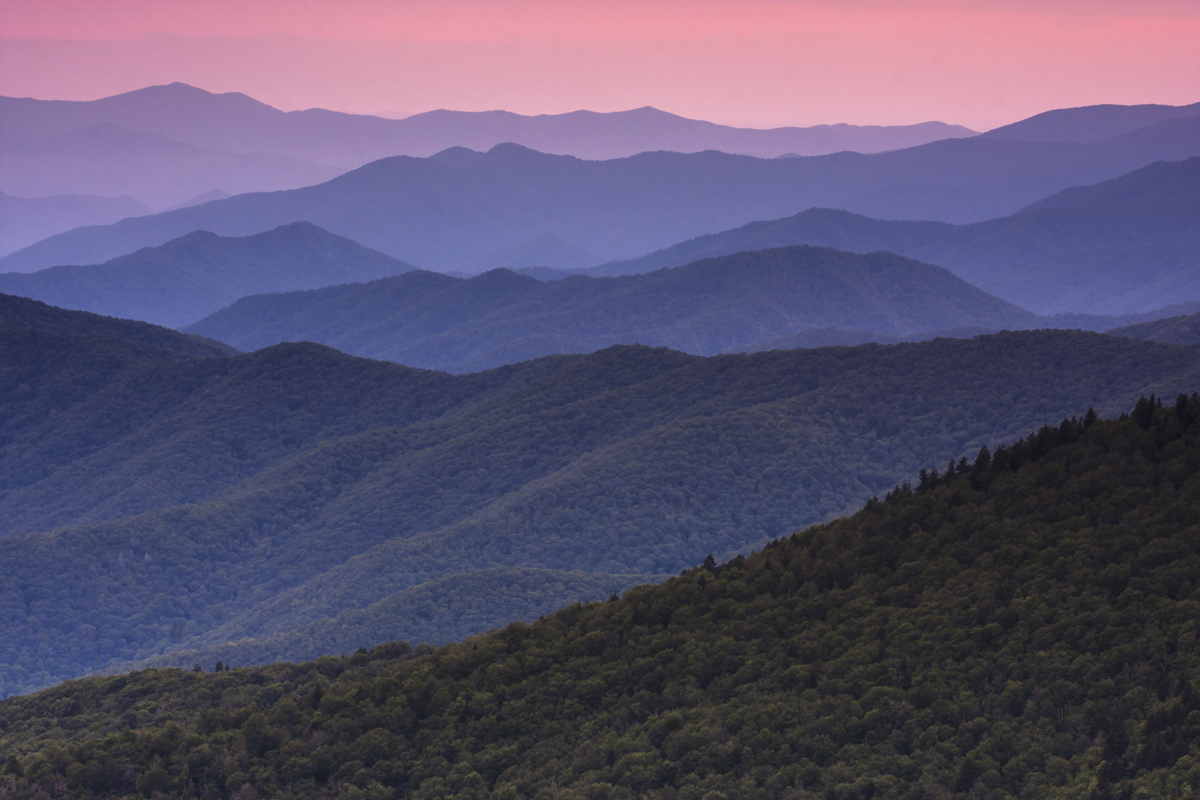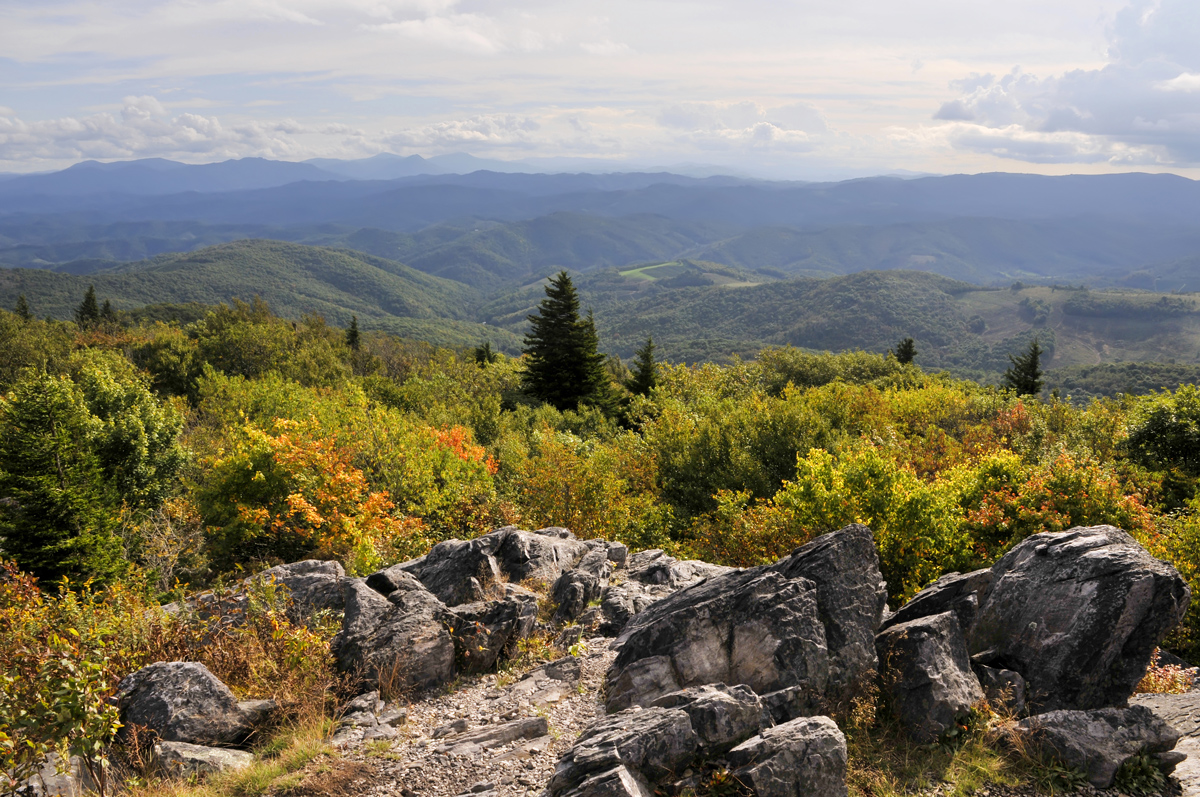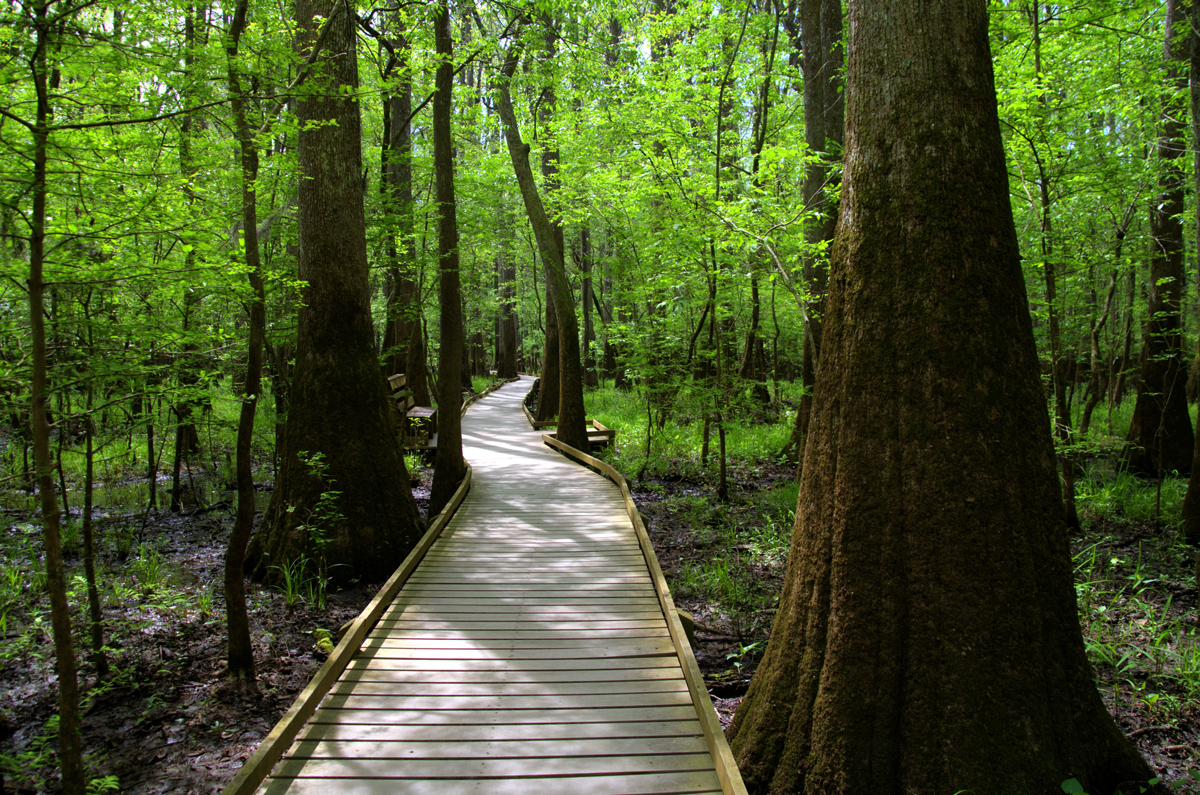21 National Parks Where You Can Enjoy the 2017 Solar Eclipse
John Day Fossil Beds National Monument, Oregon

The National Park Service (NPS) expects "very large crowds" to flood the John Day Fossil Beds National Monument, as "Eastern Oregon is predicted to be one of the best total eclipse viewing areas in the country," according to the NPS website.
Located within the John Day River basin, the national monument is known for its abundance of well-preserved layers of plant and animal fossils, ranging from the late Eocene, about 45 million years ago, to the late Miocene, about 5 million years ago. The park consists of 13,944 acres (5,643 hectares) of semidesert shrublands and colorful badlands.
All three units of John Day Fossil Beds National Monument will plunge into darkness for up to 2 minutes. Both the Painted Hills Unit and the Sheep Rock Unit are directly under the centerline of the eclipse. The Clarno Unit, however, is north of centerline but still within the range of totality. [Total Solar Eclipse 2017: Path, Viewing Maps and Photo Guide]
Partial phases of the eclipse will begin shortly after 9 a.m. local time, with totality starting at approximately 10:20 a.m., depending on which unit you're in. The total solar eclipse will last for about 1 minute and 40 seconds at the Clarno Unit and just over 2 minutes at the Sheep Rock and Painted Hills units.
The park is open to the public on the day of the eclipse. There are no entrance or parking fees, but the park anticipates large crowds and advises visitors to arrive early to ensure they catch the eclipse. Designated parking areas will be set up, but because of the unusually heavy traffic and visitation, programs and park services will be limited on the day of the eclipse. The park also warns that areas that are normally open may be closed or open to foot traffic only.
Stones River National Battlefield, Tennessee

Stones River National Battlefield, in Murfreesboro, Tennessee, also falls on the edge of the path of totality. Eclipse viewers at Stones River will experience roughly 55 seconds of totality, starting at 1:29 p.m. local time.
The park will hold a free viewing event on Aug. 21 at the visitor center, along with historical and astronomical activities throughout the day. The first 1,500 visitors will receive a complimentary pair of eclipse-viewing glasses. Park officials advise visitors to arrive at the park early, as the gates to the park will close when parking areas fill up. Also, all park gates will be closed from 12:30 p.m. to 2 p.m. CDT, so that skywatchers can focus their attention on the eclipse.
Get the world’s most fascinating discoveries delivered straight to your inbox.
Stones River National Battlefield is a 570-acre (230 hectares) park set up in memorial of the Battle of Stones River, which was a key battle of the Civil War. A short trip north to Nashville — the largest U.S. city in the path of totality — also offers a unique view of the solar eclipse. In Nashville, viewers will experience about 2 minutes of darkness, starting at 1:27 p.m.
The Obed Wild and Scenic River, Tennessee

The entire stretch of the Obed Wild and Scenic River in Wartburg, Tennessee, falls within the path of totality. The park will hold viewing events at three locations, including the Obed Visitor Center, which will experience 1 minute and 14 seconds of darkness; Lilly Overlook, which will experience 1 minute and 39 seconds of darkness; and Big South Fork Gateway Visitor Center, which will experience 2 minutes and 29 seconds of darkness.
The partial phases of the solar eclipse will begin around 1 p.m. EDT and will end at approximately 4 p.m. The total phase of the eclipse will occur at approximately 2:30 p.m., with the duration of totality varying depending on the viewing location.
Eclipse-viewing events held at the Obed Wild and Scenic River are free and open to the public. In addition to the three designated viewing areas along the river, visitors can view the eclipse from other areas of the park on their own. The park warns that vehicle access to the three viewing areas may be closed when full.
Manhattan Project National Historical Park, Tennessee

The Manhattan Project National Historical Park in Oak Ridge, Tennessee, falls within the path of totality for the solar eclipse on Aug. 21. The park has planned public viewing events at the American Museum of Science and Energy's Oak Ridge Visitor Center.
At the Oak Ridge site, viewers will experience approximately 24 seconds of totality, starting at 2:33 p.m. EDT. The partial phases of the eclipse will begin at approximately 1 p.m. and will end at approximately 4 p.m. Eclipse-viewing events are free to the public, but the park will likely fill up fast.
Oak Ridge, Tennessee, is one of three Manhattan Project National Historical Parks. There are two other sites: one in Los Alamos, New Mexico, and another in Hanford, Washington. Although these sites do not fall in the path of totality, skywatchers will still see a partial solar eclipse. The Manhattan Project sites memorialize the people, events, science and engineering that led to the creation of the atomic bomb, which helped end World War II.
Visitors can also view the eclipse from other areas of the park, including Big South Fork Gateway Visitor Center in Crossville, Tennessee, which will experience 2 minutes and 29 seconds of darkness. Totality will start at approximately 1:30 p.m. CDT at the Big South Fork Gateway Visitor Center.
Great Smoky Mountains National Park, Tennessee and North Carolina

Great Smoky Mountains National Park stretches from North Carolina to Tennessee. The western section of the park falls under the path of totality and will experience up to 2 minutes and 20 seconds of darkness during the eclipse. Great Smoky Mountains National Park has three viewing areas: Cades Cove, Oconaluftee and Clingmans Dome, the highest peak in not only the park but the entire state of Tennessee.
The park has planned events in all three viewing areas, including a special sold-out event in Clingmans Dome Trailhead parking area, which will feature educational exhibits and storytellers on the day of the eclipse. The featured speakers will talk about the science and cultural connection of the Great American Total Eclipse. A large screen will also be set up in the Clingmans Dome Trailhead parking area to show the national NASA TV broadcast of the eclipse.
Although the event at Clingmans Dome on Aug. 21 is currently sold out, park officials recommend regularly checking ticket availability at recreation.gov for cancellations. Clingmans Dome will be closed to vehicle traffic in order to host the event.
In addition, Great Smoky Mountains National Park will host staff-guided eclipse-viewing events at Cable Mill (Cades Cove) and Oconaluftee Visitor Center. These events are informal and free to the public. The park also has nine campgrounds for people interested in staying overnight (permit required). Park officials note that parking and vehicle access may be limited on the day of the total eclipse, and certain areas of the park may close when full.
If you can't make it to Great Smoky Mountains National Park, you can check out events hosted by other communities in the surrounding area. You can find more information here.
Appalachian National Scenic Trail, multiple states

The Appalachian Trail stretches from Springer Mountain in Georgia to Mount Katahdin in Maine. The total solar eclipse on Aug. 21 will pass directly over sections of the Appalachian Trail in North Carolina and Tennessee.
Hikers can trek to the top of the 5,200-foot (1,585 m) Albert Mountain near Franklin, North Carolina, to witness the eclipse. The trail to the peak of the mountain is about 4 miles (6.4 km) and starts near the Standing Indian area of the southern Nantahala National Forest. The Appalachian Trail is a public footpath, and no fees or permits are required to walk on the trail.
Franklin, North Carolina, will experience about 2 minutes and 30 seconds of totality, starting at 2:35 p.m. local time.
Check near the end of this slideshow for a list of other national trails where totality is visible.
Blue Ridge Parkway, North Carolina

The Blue Ridge Parkway offers a scenic route for watching the solar eclipse. The parkway, also called "America's Favorite Drive," is a 469-mile (755 km) highway that runs through Virginia and North Carolina.
The southern section of the parkway near Asheville, North Carolina, will be in the path of totality and experience between 20 seconds and 1 minute of darkness, depending on the location. Totality will begin around 2:36 p.m. local time. While there are numerous overlooks along the highway to stop and park, most will likely fill up quickly on the day of the eclipse. Skywatchers can also hike to popular summits — like Black Balsam Knob, Devil's Courthouse or Waterrock Knob — to see the eclipse.
Ninety Six National Historic Site, South Carolina

Ninety Six National Historic Site is located in the direct path of the total solar eclipse and will host an eclipse-viewing event at Star Fort Pond. There will be family-friendly solar system activities and educational programs led by park rangers.
The Ninety Six National Historic Site in South Carolina will experience 2 minutes and 32 seconds of darkness, starting at 2:39 p.m. local time. Partial phases of the solar eclipse will begin at 1:10 p.m. The Ninety Six viewing event is free to the public. Park officials ask that you make a reservation so that they can properly prepare for the event.
Congaree National Park, South Carolina

The path of the solar eclipse will also pass over South Carolina's Congaree National Park, the largest intact expanse of old growth bottomland hardwood forest remaining in the southeastern United States.
On the day of the eclipse, the park will host a viewing event with exhibits and hikes. Folks who travel to Congaree National Park in Hopkins, South Carolina, will see 2 minutes and 31 seconds of darkness, with totality starting at 2:42 p.m. Partial phases of the eclipse will start at 1:13 p.m.
Visitors can join Congaree National Park staff for a guided hike among the ancient trees as the eclipse occurs. The event, called Shadows and Science in the Wilderness of Congaree National Park, is one of many free programs and exhibits being held at the park on the day of the eclipse.
Charles Pinckney National Historic Site, South Carolina

Located in Mount Pleasant, South Carolina, the Charles Pinckney National Historical Site will be one of the last national park locations to experience the total solar eclipse. Totality will start at 2:46 p.m. local time and will last for about 1 minute and 48 seconds.
The 28-acre (11 hectares) site honors Charles Pinckney, who was a principal author and signer of the U.S. Constitution. The park will hold special eclipse-viewing events on Aug. 21 that are free to the public. Visitors can also walk the plantation grounds and nature trail while the eclipse occurs. Mount Pleasant is located only a short distance from the historical coastal city of Charleston, which is also hosting several eclipse events.



